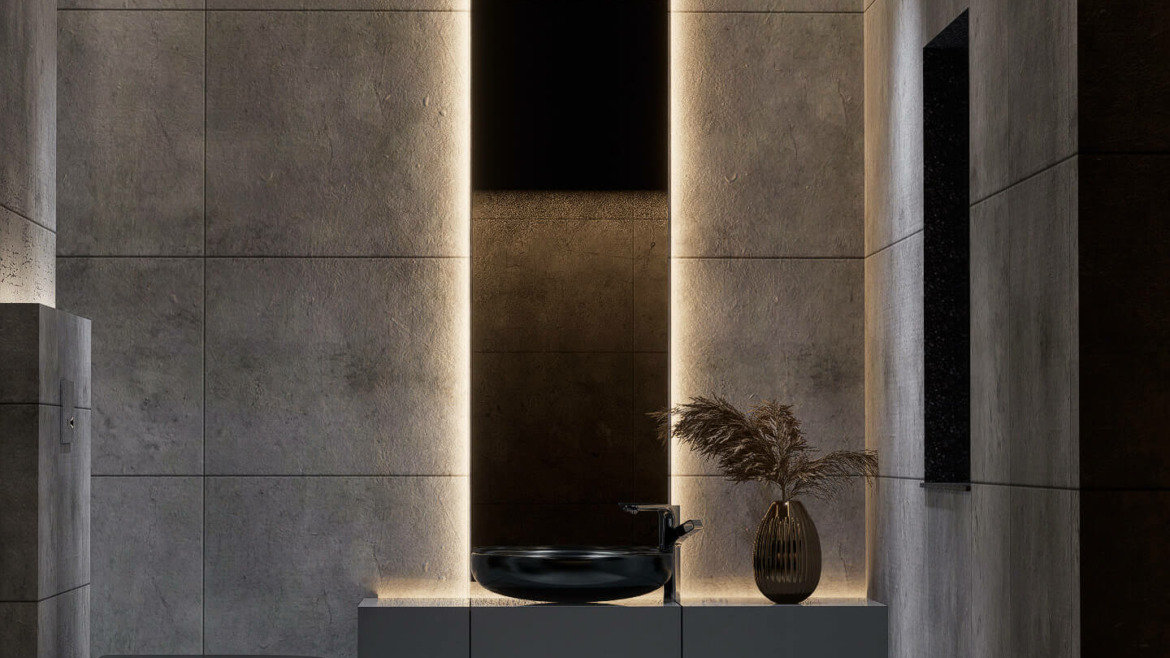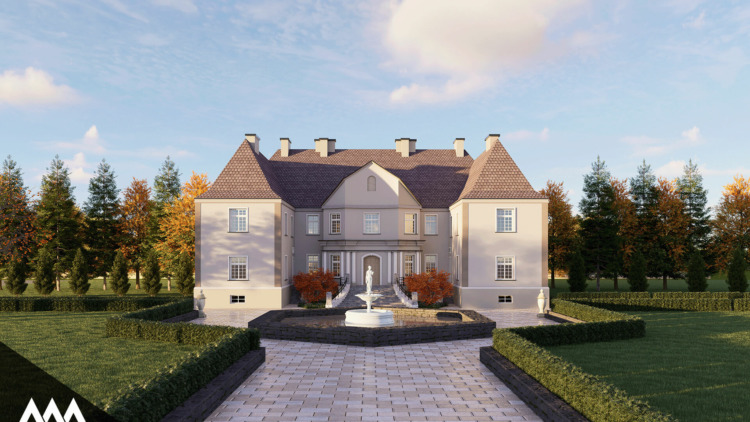Real estate developers use architectural rendering visualization to display their properties to the market before actual building occurs. Standard marketing approaches which include blueprints along with static images typically do not present buyers with a proper understanding of what a property will look like. Pre-sales marketing heavily relies on the implementation of 3D virtual home walkthrough experiences. The detailed exploration features in these immersive experiences give potential buyers improved confidence to make their buying decisions.
Real estate property sales strategies undergo transformation because customers increasingly search for realistic property presentations. Developer teams along with architects and real estate agents utilize high-quality visual representations to show property features, room floor plans and outside building designs which improves property attractiveness. The implementation of this approach brings multiple benefits by both drawing potential buyers while making the sales process clearer since it provides accurate representations of unbuilt properties.
What Is 3D Architectural Rendering?
Specialized software enables the creation of photo-quality digital representations of constructions along with house elements and outdoor spaces through the 3D architectural rendering method. The visual representations assist architects as well as real estate developers and clients to understand the final appearance of their projects.
The evolution of this technology surpassed basic 2D drafts to develop entirely interactive 3D models in parallel with computer-aided design (CAD). Today’s rendering techniques incorporate lighting, texture mapping, and material simulation, providing a level of realism that allows for accurate project evaluations before any physical work begins.
Key Technologies Used in 3D Rendering
- 3D Modeling – The initial step towards digital structure production belongs to 3D Modeling. Architects plus designers depend on SketchUp, AutoCAD along with Revit to build comprehensive digital plans that establish shapes together with layouts and proportions for their projects.
- Texture Mapping – After model construction texture mapping spreads surface features including wood textures and concrete designs and glass reflections onto the model surface. This application step adds to the realistic visual quality because it accurately represents actual construction materials.
- Lighting and Rendering Engines – Graphic design software V-Ray and Lumion along with Unreal Engine enable the production of real-world lighting along with shadows and reflections. Virtual reality quality in 3D renderings reaches its highest point through this process.
Why Pre-Sales Matter in Real Estate?
Real estate developers together with prospective buyers need the pre-sales phase to succeed in the market. Potential buyers face major obstacles when purchasing pre-built properties due to their difficulty in comprehending traditional 2D floor plans and layout and design aesthetics. The absence of transparent imagery prevents potential buyers from making property investments thus slowing down sales cycles and reducing conversion statistics.
3D virtual house walkthroughs create major improvements in pre-sales achievements. Developers achieve pre-sale success by delivering immersive virtual visualizations that help clients understand properties in an honest manner. Buyers achieve better space comprehension to make confident buying choices without visiting actual sites.
The implementation of 3D visualization creates the following main advantages during pre-sales activities:
- 3D visualizations function to lower uncertainties because they deliver accurate final product views.
- 3D rendering visuals drive buyers to reach their choices at a faster pace.
- Digital property exploration strengthens the confidence of potential homebuyers to commit investment decisions.
Real estate developers who embrace 3D architectural visualization achieve better pre-sales operations and draw broad market segments that results in enhanced client involvement which produces more sales.
How 3D Architectural Visualization Enhances Pre-Sales?
Realistic Property Visualization Before Construction
The major pre-sales barrier of obtaining property investments for non-existent properties becomes easier through 3D rendering because it creates life-sized detailed visualizations of new developments. Traditional floor plans together with sketches do not deliver the same realistic view as 3D architectural visualization does since it allows viewers to perceive actual completed spaces.
- Customers experience precise visual exposure to room designs as well as the positioning of spaces and the entire design appearance.
- Interior and exterior spaces receive realistic representations from the combination of lighting effects and material texture applications.
- Through design options showcasing developers help their clients make space personalization choices which affect construction plans.
Real estate professionals through architectural rendering visualization create distinct emotional bonds between homebuyers and their future properties using accurate depictions.
Engaging Buyers with 3D Virtual Walkthroughs
Modern marketing of real estate properties uses 3D virtual tour walkthroughs to achieve tremendous changes in their sales approach. The interactive virtual experiences let potential purchasers explore properties as if their actual presence would enable them to see detailed property layouts and finishing touches and design aspects.
- They attract potential buyers who need to conduct their business from afar along with international investors who cannot view the site firsthand.
- The platform provides complete all-around inspection of properties to enable buyers to examine details across full 360 degrees.
- Through emotional connection the space becomes more approachable for people who wish to become homeowners.
Dealers who incorporate 3D virtual walkthroughs within their marketing materials boost commercial interest through validating buyer commitment thereby producing successful leads.
Reducing Buyer Uncertainty and Increasing Confidence
The problem of pre-sales property involves prospective buyers who remain doubtful about the design aspects and spatial arrangements along with the overall aesthetic feel.
- Potential buyers avoid purchasing deals when viewing a project without proper visualization but 3D architectural visualization eliminates their doubts by showing authentic previews that build trust among consumers.
- Before any construction work starts buyers obtain precise insights about dimensions and selected materials together with layout plans.
- Developers actively prevent potential buyer issues through ongoing design changes that happen while buyers watch.
- Through 3D rendering and walkthrough capabilities potential buyers develop confidence which helps them make decisions more swiftly.
The visualization techniques which provide realistic property views help builders create better trust with potential buyers which results in elevated pre-sale success numbers.
The Role of 3D Rendering in Real Estate Marketing
Enhancing Online Property Listings with 3D Visuals
Properties listed online become more attractive when they include three-dimensional visuals.
High-quality visuals win the day in present-day real estate markets which operate as competitive arenas. Standard two-dimensional images combined with blueprints provide insufficient property representation which leads to unsure buying decisions from potential customers. 3D visualization of architectural rendering turns ordinary property listings into dynamic realistic views which drives potential buyers to show greater interest and results in more successful sales.
- Properties decorated with 3D architectural renderings gain substantially higher attention from prospective buyers than those presenting standard photographs only.
- With interactive 3D walkthroughs property buyers gain the ability to perform remote virtual site inspection and achieve virtual independence and immersion in the space.
- Realistic visualizations provide potential real estate consumers with clear representations of spaces and design elements along with materials which makes property evaluation simpler before actual site visits.
Real estate agents who use 3D rendering in online listings see substantial benefits by converting leads into serious buyers at the beginning of property sales.
Social Media and Digital Marketing with 3D Content
Real estate marketing professionals now depend on 3D animations and virtual walkthroughs because digital marketing demands innovative property promotions. High-quality 3D rendering content strengthens property advertising and successfully attracts viewers across all online advertising channels from social media to email campaigns and paid placement.
- The use of 3D animations gives advertising real estate properties a more interactive and captivating quality.
- Real estate businesses can direct their potential buyer base through personalized marketing using virtual tours and 3D walkthroughs.
- Social media platforms select video and interactive content above other forms so 3D renderings and animations become a highly shareable medium that generates natural leads.
Developers and realtors increase brand visibility through their digital marketing by adding 3D rendering visualization which produces marketing assets that seize attention and generate sales.
Boosting Sales with Augmented and Virtual Reality
Advanced technology now encourages real estate marketing through virtual reality (VR) and augmented reality (AR) applications becoming widely accepted. Through VR and AR technologies buyers can have interactive property tours that make their real estate decisions more confident.
- Other than 360-degree virtual tours builders who use VR-based property walkthroughs enable users to fully immerse themselves to comprehend spaces and layouts better.
- The augmented reality capabilities of AR tools help buyers edit their interiors live which provides them with the chance to test placement options alongside color and finish selections before making a purchase.
- Businesses in the real estate industry who adopt VR and AR technology improve their market position because these tools increase customer involvement and purchasing decisions.
Developers and agents who integrate 3D rendering with VR and AR in their sales process provide technological engagement that drives up property sales and speeds up pre-sales conversions.
Conclusion
The property marketing industry joined by real estate sales has undergone transformation through 3D architectural visualization because buyers experience complete space visualization before any structure goes up. 3D walkthroughs together with VR technology enable buyers to become more confident about property purchases by reducing their sense of uncertainty while simultaneously speeding up pre-sales. Developers and agents adopting 3D rendering solutions in the real estate industry will achieve better market position and faster sales with increased buyer attraction.


